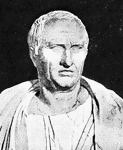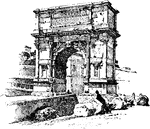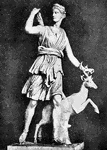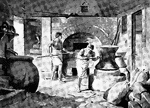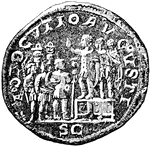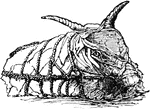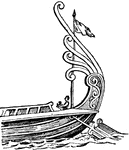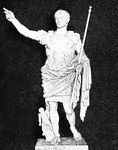
Augustus
"Augustus ruled for about forty-two yeras, that is, from 27 B.C. to 14 A.D., and this period is known…
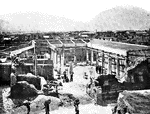
Pompeii
"Excavating a house at Pompeii from eruption of Vesuvius, which buried the cities of Herculaneum and…
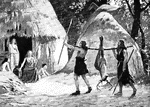
Germans
"Early Germans. These German ancestors of ours, for so we must consider them, since the chief element…
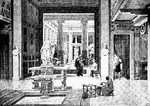
House
"A Roman house. In early times the private houses of the Romans were very simple, showing little attempt…
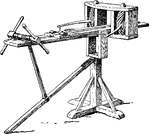
Catapult
"Catapult from the Roman military system. The Roman army was divided into legions, each of which contained…
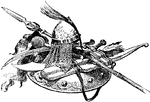
Saracen Arms
"Saracen Arms. Charlemagne now had to deal with certain non-Germanic peoples who were threatening his…

Martin Luther
"Martin Luther was born at Eisleben in 1483. He was the son of a poor miner, had entered the Augustinian…

Queen Elizabeth
"Queen Elizabeth was the daughter of Henry VIII, by Anne Boleyn. Her reign is one of the most remarkable…

Acanthoclinus
"(A fish that) had a compressed claviform body, posterior dorsal fins nearly opposite to the anus, prolonged…

Acanthus
"A genus of small herbaceous plants of southern Europe and Africa; they have spinosely toothed leaves,…

Accubation
"The act of lying or reclining; specifically, the ancient practice, derived from the Orient, of eating…
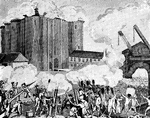
Bastile
"The taking of the Bastile, July 14, 1789. The Parisian mob, not satisfied with the formation of the…

Agrenon
"A net-like woolen garment worn by bachanals and soothsayers in ancient Greece. Image: Toso of Apollo…
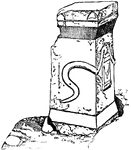
Greek Altar
"Round, triangular, or square in plan, often elaborately adorned with sculpture, and bearing inscriptions."-Whitney,…

Amphora
"A jar with two handles; Among the Greek and Roman, a vessel, usually tall and slender having two handles…
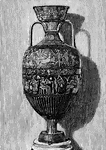
Amphora
"A jar with two handles; Among the Greek and Roman, a vessel, usually tall and slender having two handles…

Amphora
Amphoræ are jars with narrow necks and two handles, used by ancient Greeks for transporting oil…

Amphora
Amphoræ are jars with narrow necks and two handles, used by ancient Greeks for transporting oil…

Amphora
Amphoræ are jars with narrow necks and two handles, used by ancient Greeks for transporting oil…

Battering Ram
"The Battering Ram is an ancient military contrivance used for battering down walls. It consisted of…
Filipino Bolo
"A Bolo is a short, broad, lance-shaped weapon; used by the Filiinos in their operations against the…

Filipino Bolo Sheath
"A Bolo is a short, broad, lance-shaped weapon; used by the Filiinos in their operations against the…
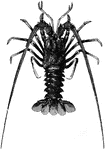
Spiny lobster
"The Spiny Lobster, Palinurus vulgaris, which may be taken as the type of the family, often…
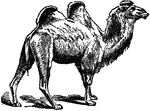
Camel
"Camel is a genus of ruminant quadrupeds, characterized by the absence of horns; a fissure in the upper…
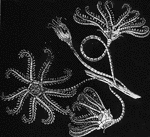
Encrindae
"Theses animals were all supported upon a long stalk, at the extremity of which they floated in the…
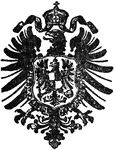
German Eagle
"The Eagle is an emblem in heraldry, war, and legend. The eagle, borne upon a spear, was used by the…
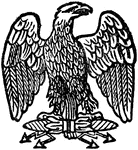
French Eagle
"The Eagle is an emblem in heraldry, war, and legend. The eagle, borne upon a spear, was used by the…

Roman-Doric Frieze
"A Frieze, in architecture, is that portion of the entablature which is between the architrave and the…
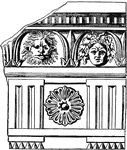
Roman-Doric Frieze
"A Frieze, in architecture, is that portion of the entablature which is between the architrave and the…

Torque
"A Torque, in archæology, is a twisted collar of gold, or other metal, worn around the neck, in…
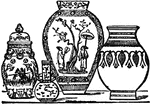
Chinese, Japanese and Indian Vases
"A Vase is a vessel of various forms and materials, applied to the purposes of domestic life, sacrificial…

Grecian Vases
"A Vase is a vessel of various forms and materials, applied to the purposes of domestic life, sacrificial…

Temple of Karnak
"Karnak is a village in Egypt built on the site of Thebes, on the bank of the Nile, and renowned for…

Egyptian Water Lily
"Lotus is a name given to various flowers, including several beautiful species of water lily, especially…

Lycian Tomb
"Lycia was, in ancient geography, a country on the S. coast of Asia Minor, extending toward Mount Taurus,…

Ostrich
"The Ostrich is the largest of all living birds, standing from six to eight feet in height, and has…
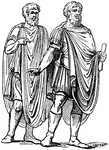
Abolla
A cloak chiefly worn by soldiers, and thus opposed to the toga, the garb of peace. The abolla was used…

Ancient Athens
"The mosted noted of the orations of Isocrates is the Panathenaicus or Panegyric of Athens, a work on…
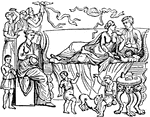
Accubatio
"The act of reclining at meals. The Greeks and Romans were accustomed, in later times, to recline at…

Passion Flower
"Pasiflora is the passion-flower. Generally climbing herbs or shrubs. Fruit succulent, seeds many. Found…
Pastoral Staff
"The Pastoral Staff is, in the Roman Catholic Church, the official staff of a bishop or abbot. The pastoral…

Demosthenes
"In the oratory of more thn two thousand years Demosthenes stands in the front rank, and will always…
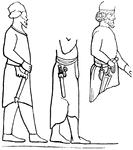
Acinaces
"A Persian sword, whence Horace speaks of the Medus acinaces. The acinaces was a short and…

Aegis
"signifies, literally, a goat skin. According to ancient mythology, the aegis worn by Jupiter was the…
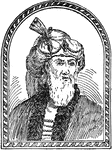
Flavius Josephus
"Flavius Josephus was a strange amalgamation of Jew, Greek, and Roman, admittedly not what he should…
